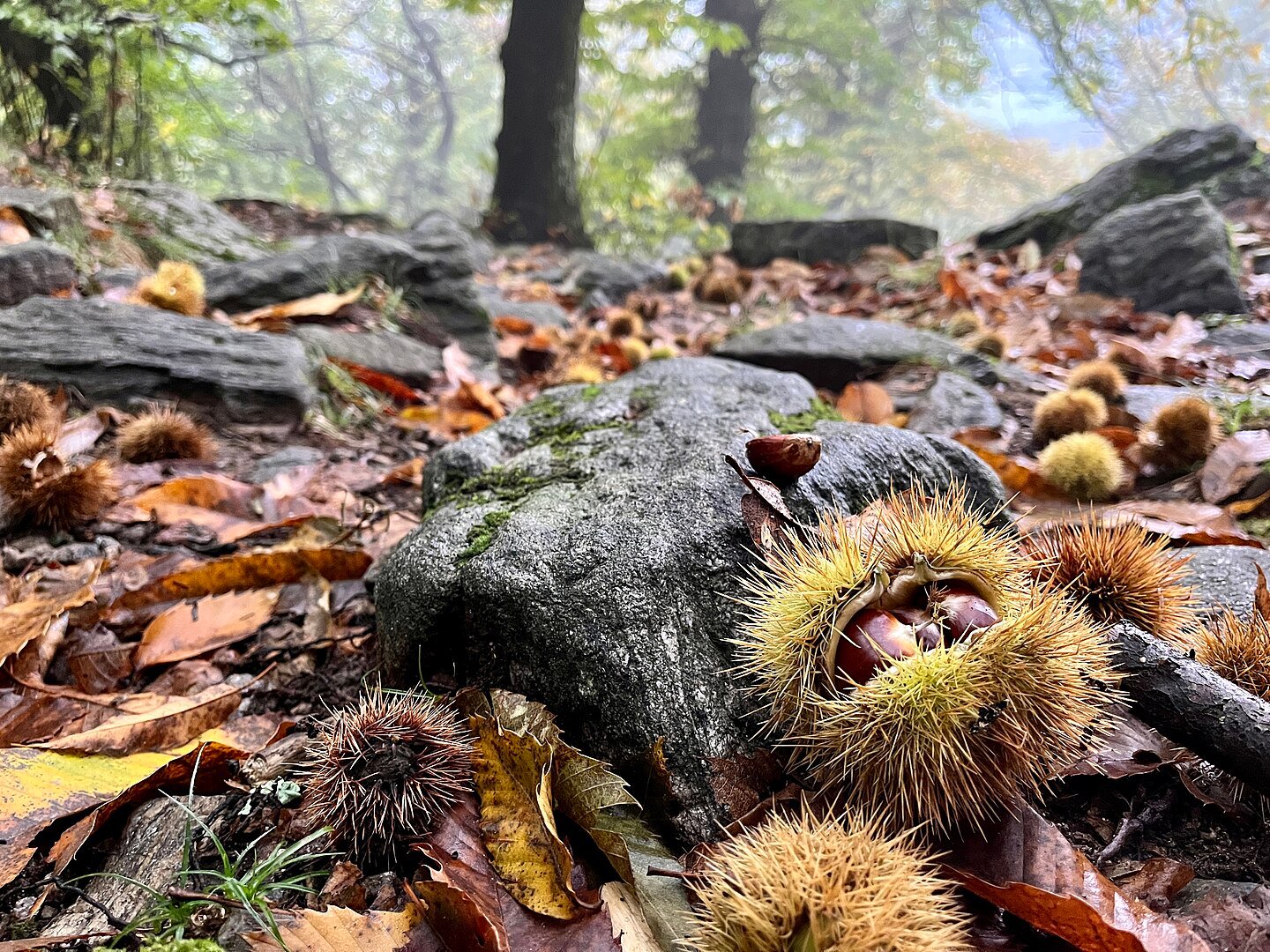

Deep in the forests of southern Switzerland, sweet chestnut trees stand as living evidence of the Roman Empire’s long-reaching influence, not just in roads and language, but in the very landscape itself.
Researchers in Switzerland have traced the tree’s proliferation to Roman expansion across mainland Europe. While the nuts were considered food for the poor in Roman society, the elite prized the wood. It grew fast, was durable, and ideal for construction and military use.
“Ancient texts show that the Romans were very interested in Castanea, especially for its resprouting capacity,” said Patrik Krebs of the Swiss Federal Institute for Forest, Snow and Landscape Research (WSL).
“When you cut it, it resprouts very fast and produces a lot of poles that are naturally very high in tannins, which makes the wood resistant and long-lasting.”
The Romans didn’t spread sweet chestnuts for their fruit. Chestnuts were seen as humble food for shepherds and farmers. Instead, the Romans focused on the tree’s ability to grow back quickly after being cut—a process called coppicing.
This allowed a steady timber supply for forts, shelters, and tools. It also helped the trees live longer when carefully managed. Even today, chestnuts benefit from this kind of pruning and care.
Scientists analyzed layers of ancient pollen in soil samples to track the appearance and distribution of chestnut trees. In Switzerland, France, and Germany, chestnut pollen was nearly absent before the Roman period. Around the year 0 AD—during the peak of the Roman Empire—pollen records indicated a sudden increase.
In Ticino, researchers found a large increase in pollen from chestnuts, walnuts, and grains at 800 meters (2,624 feet, or almost half a mile) above sea level. This suggests that the Romans planted orchards high in the Alps, bringing farming practices to areas where crops were once rare.
Pollen evidence also shows that sweet chestnuts had become the dominant tree in parts of Ticino by the end of the Roman Empire. Older forests filled with alders and other species had been replaced. “This was done by humans,” Krebs explained.
“It was a complete reorganisation of the vegetal landscape.”
Even after Rome fell, locals continued to plant and manage chestnut trees. The knowledge passed on by Roman foresters became a part of local culture and survival.
By the Middle Ages, chestnuts were a major food source in the Alps. People dried the nuts, ground them into flour, and used them in cooking. The trees were especially valuable in mountain regions, where few other crops could survive.
The ancient Romans left an indelible imprint on the world they enveloped into their empire. The straight, long-distance roads they built can still be followed beneath the asphalt of some modern highways. They spread aqueducts, sewers, public baths and the Latin language across… pic.twitter.com/WBaKG7UCAs
— Rita Rosenfeld (@rheytah) May 14, 2025
“In our valleys, chestnuts were the most important pillar of subsistence during the Middle Ages,” Krebs said. Because of careful management, some chestnut trees in Ticino have lived nearly 1,000 years. In the wild, these trees typically survive only about 200 years before being overtaken by other species.
The Romans brought skills and ideas from across their empire. They connected regions through roads and trade. However, local communities, who adopted and preserved these practices, likely did the actual planting and care of chestnut orchards.
“In an orchard, there’s just the chestnut tree and the meadow below, it’s like a luxury residence for the tree,” Krebs said. Without this care, forests change. Competing trees crowd out the chestnuts, and the benefits fade.
Although Romans helped chestnuts spread through mainland Europe, they may not have brought them to Britain. A study by the University of Gloucestershire found that sweet chestnuts likely arrived in the British Isles after the Romans had left.
Still, chestnuts are now common in UK woodlands. Many are descendants of ancient trees once planted in Roman-era Europe. One of the oldest known chestnut trees in the world, found in Sicily, is believed to be up to 4,000 years old.
Today, chestnut trees face serious challenges. Climate change, disease, and the decline of rural life threaten traditional orchards. As fewer people farm in mountain regions, the long bond between humans and chestnuts weakens. But signs of this history remain.
In Ticino and across the Alps, chestnut trails and seasonal festivals honor the tree’s place in the Roman Empire and local heritage. Krebs explained that humans got food and timber. On the other hand, the tree got care, a longer life, and a home that stretched across a continent.
